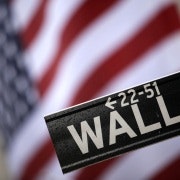America's unwavering jobs dilemma
The US economy added only 80,000 jobs in June – much less than what is needed to keep up with natural population growth. The unemployment rate was steady at 8.2 per cent, largely because another 34,000 unemployed Americans chose not to look for work.
In the weakest recovery since the Great Depression, nearly the entire reduction in unemployment since October 2009 has been accomplished through a significant drop in the percentage of adults participating in the labour force – either working or looking for work.
Growth slowed to 1.9 per cent in the first quarter from 3 per cent the previous period, and was largely sustained by consumers taking on more car and student loans, business investments in equipment and software, and residential construction. The housing market is improving and that should lift construction a bit more but overall, the economy and jobs growth should remain too slow to genuinely dent unemployment.
The June jobs report indicates growth may be even slower in the second quarter, and the economy is dangerously close to stalling and falling into recession.
Manufacturing added 11,000 jobs. Other big gainers included health care, professional services, leisure and hospitality, wholesale trade, and local governments.
Construction gained only 2,000 jobs, and big losers were retail trade, transportation and warehousing, information and communications, and federal governments.
Gains in manufacturing production have not instigated stronger improvements in employment largely, because so much of the growth is focused in high-value activity. Assembly work, outside the auto patch, remains handicapped by the exchange rate situation with the Chinese yuan.
Recent moves by China to further weaken its currency and to close its markets to stimulate its own flagging demand indicate matters will get worse without a substantive response from Washington. Also, concerns about health insurance costs, once Obama Care is fully implemented, are discouraging employers.
The financial crisis in Europe and mounting problems in China's housing and banking sectors continue to instigate worries among US businesses about a second major recession, and those discourage new hiring. The US economy continues to expand at a torturously slow pace, and is quite vulnerable to shock waves from crises in Europe and Asia.
Factoring in those discouraged adults and others working part time for lack of full time opportunities, the unemployment rate is 14.9 per cent.
Prospects for substantially lowering the headline unemployment rate are slim, because so many folks who left the labour force would likely return if economic conditions improved.
Even through the recovery, household wealth remains well below its recession levels, and households once accustomed to two incomes, now getting along on one, will be increasingly challenged. Stagnant wages and stock market valuations have frustrated households efforts to increase savings and rebuild assets in the face of declining real estate values, and to adjust family budgets to fewer employed adults.
Were growth to pick up and the job market improved, given the state of household finances, the percentage of adults seeking employment could easily rise to pre-recession levels.
The economy would have to add about 13 million jobs over the next three years – about 360,000 each month – to bring unemployment down to 6 per cent. Growth in the range of 4 to 5 per cent is necessary to accomplish that.
Growth is weak and jobs are in jeopardy, because temporary tax cuts, stimulus spending, large federal deficits, expensive but ineffective business regulations, and costly health care mandates do not address structural problems holding back dynamic growth and jobs creation – the huge trade deficit and dysfunctional energy policies.
Oil and trade with China account for nearly the entire $600 billion trade deficit. Dollars sent abroad that do not return to purchase US exports, are lost purchasing power. Consequently, the US economy is expanding at 2 per cent a year instead of the 5 per cent pace that is possible after emerging from a deep recession and with such high unemployment.
Without prompt efforts to produce more domestic oil, redress the trade imbalance with China, relax burdensome business regulations, and curb health care mandates and costs, the US economy cannot grow and create enough jobs.
Peter Morici is an economist and professor at the Smith School of Business, University of Maryland School, and a widely published columnist .
















